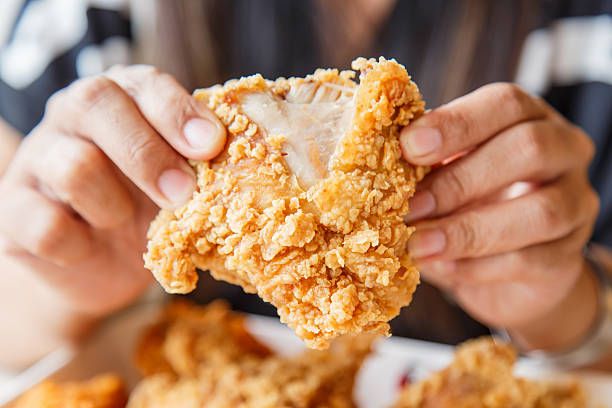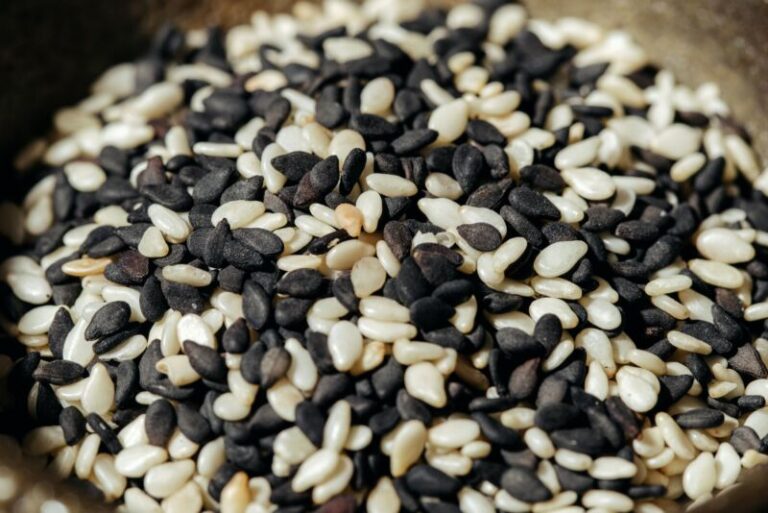How to Keep Pistachios Fresh and Crunchy for the Long Haul
Pistachios are one of my favorite snacks. Their delicious, slightly sweet flavor combined with that addictive crunch makes them hard to stop eating. I love incorporating pistachios into salads, pastas, desserts, and more. But nothing beats cracking open a pistachio shell and enjoying the nut inside when it’s still fresh and crunchy.
So how do you make sure your pistachios maintain that texture and flavor over time? Proper storage is key for keeping pistachios fresh for extended periods. In this article, I’ll share tips on ideal storage conditions, storing in-shell vs shelled nuts, preventing staleness, products to try, and proper handling techniques. Follow these pistachio storage guidelines and you’ll be able to enjoy satisfyingly crunchy nuts for many months to come.
A Bit of Background on Pistachios
Pistachios have an extensive history, originating in the Middle East and Central Asia. Archaeological evidence shows they were a popular snack among early civilizations like the Romans and Persians. The nuts were introduced to the United States in the late 19th century.
Today, pistachios are popular worldwide. The United States is currently one of the largest producers and exporters of pistachios globally. Most US pistachios come from California where the arid climate offers ideal growing conditions.
Beyond their addictive crunch and taste, pistachios provide many nutritional benefits:
- Protein – A one ounce serving contains about 6 grams of plant-based protein.
- Fiber – They are a good source of dietary fiber with around 3 grams per serving.
- Healthy fats – Pistachios contain mostly monounsaturated fatty acids that are good for heart health.
- Antioxidants – They are rich in antioxidants like vitamin E, carotenoids, phenolic compounds.
- Heart health – Their mix of nutrients supports cardiovascular function and blood lipid profiles.
- Weight management – Their protein and fiber content helps you feel fuller.
- Digestion – The fiber content also promotes good digestion and gut health.
So pistachios are definitely more than just a tasty snack – they’re a legitimate health food! But you can only take advantage of those benefits if you store them correctly so they remain fresh.
How to Keep Pistachios Fresh?
To keep your pistachios tasting great and crunching satisfyingly, you need to store them properly. Here are the ideal conditions:
Cool Temperature Between 32°F and 50°F
Storing pistachios in the refrigerator or another cool, dry place helps retain freshness. The optimal temperature range is between 32°F and 50°F. This cold environment prevents the nuts’ healthy fats from becoming rancid and developing off-flavors. It also maintains texture by slowing changes that lead to soft or soggy nuts over time.
Low Humidity Below 70% RH
Pistachios should be kept in low humidity – ideally below 70% relative humidity (RH). High humidity encourages mold growth which can make the nuts unsafe to eat. Proper drying after harvest is also important for preventing mold.
No Light Exposure
Avoid storing pistachios in direct sunlight or bright light. Light stimulates oxidation of the fats which causes them to go rancid faster. Excess light exposure can also cause fading of the nuts’ vibrant green color.
Airtight Containers or Packaging
Storing pistachios in a truly airtight container – like a mason jar, sealed plastic bag, or container with a tight-fitting lid – protects them from oxygen exposure. Oxygen accelerates the nuts’ fat oxidation, so keeping it out substantially prolongs freshness. Vacuum sealed bags or containers are ideal for eliminating oxygen.
Following these conditions maximizes pistachios’ shelf life. Let’s look more closely at some suitable storage methods.
Storing In-Shell vs Shelled Pistachios
Should you store whole pistachios in the shell, or is it better to shell them first for storage? Here are the key differences in their shelf lives:
In-Shell Pistachios
- Refrigerator – Properly stored in-shell pistachios will last up to 1 year refrigerated. Their protective shells help prolong freshness.
- Freezer – In-shell pistachios can be frozen for even longer shelf life. They’ll maintain quality for up to 2 years in the freezer.
Shelled Pistachios
- Pantry – Once shelled, pistachios only last around 3 months at room temperature before becoming noticeably stale.
- Refrigerator – Refrigeration extends their shelf life to about 1 year.
- Freezer – For maximum freshness, shelled pistachios should be frozen. They’ll stay fresh for up to 1 year frozen.
So in-shell nuts retain freshness substantially longer than shelled ones, thanks to their protective shells. But for long term storage beyond a year, freezing maximizes retention of flavor and texture whether in-shell or shelled. Let’s go over some freezing best practices.
Freezing for Extended Freshness
Freezing is an excellent method for keeping shelled or in-shell pistachios fresh longer term. Here are some tips:
- Use airtight packaging – Make sure pistachios are in a container or bag that seals tightly to prevent freezer burn. Mason jars, heavyweight zipper bags, or vacuum seal bags all work well.
- Exclude air – Compress bagged nuts to exclude excess air before sealing. You can also use a straw to suck out air from zipper bags.
- Prevent clumping – For shelled nuts, spread in a single layer on a sheet pan and freeze initially. Once frozen, transfer to an airtight container. This prevents clumping.
- Label – Mark containers with contents and freeze date for easy identification.
- FIFO – Follow first-in-first-out for usage, eating oldest containers first.
With proper freezer storage, pistachios stay fresh and delicious for over a year. Thaw gradually in the fridge before enjoying.
Keeping Pistachios from Going Stale
What are some signs of pistachios going bad? Here’s how to recognize stale nuts:
- Soft texture – Fresh pistachios should be quite crunchy. Softness indicates staleness.
- Faded color – Stale in-shell nuts often turn a dull, pale shade of brownish green compared to their normal vibrant green.
- Rancid smell – Rancid nuts give off a distinctive unpleasant, bitter odor from the fats oxidizing.
Luckily there are some tricks for reviving pistachios if they show early signs of staleness:
Roast them – Roast shelled pistachios at 300°F for 7-10 minutes to bring back crunch.
Freeze them – Freezing can re-freshen slightly stale nuts.
Use oxygen absorbers – Placing an oxygen absorber pouch in the storage container helps prevent oxidation that causes rancid flavors.
So don’t toss pistachios at the first hint of staleness – try reviving them with roasting or freezing instead. Proper storage also prevents nuts from deteriorating in the first place.
Storing Pistachio Products and Byproducts
In addition to plain pistachios in the shell or shelled, there are many products made from pistachios that require proper storage as well:
- Pistachio nut butter – After opening, refrigerate pistachio butter to prevent the oils from separating or going rancid.
- Pistachio oil – Unopened pistachio oil can be kept in a cool, dark pantry. Refrigerate after opening and use within 3 months for the best flavor.
- Pistachio flour – Store homemade or packaged pistachio flour in the refrigerator or freezer in an airtight container. Fridge storage lasts around 3 months; freezing extends shelf life to a year.
- Pistachio paste – Keep refrigerated up to 1 week or freeze in ice cube trays for easy use. Frozen cubes last 6 months to a year.
Treat byproducts like nut butters, oils and flours the same as raw nuts – keep them tightly sealed in cool, low light conditions to maintain freshness. The fridge or freezer ensures the longest shelf life.
Proper Handling for Storing Pistachios
After purchasing your stash of pistachios, incorporate these handling steps before storage to keep them in prime condition:
- Wash – Gently rinse in-shell pistachios under cool water and pat dry. This removes surface dirt and dust. Don’t soak them.
- Dry – Spread the rinsed nuts in a single layer on towels. Let air dry completely before storing.
- Crack shells – For shelled nuts, crack pistachio shells by pressing near the seam. Avoid impact cracking that can damage the nuts.
- Reuse shells – Save your emptied pistachio shells for crafty DIY projects like decorations, picture frames or candles.
Following best practices for handling, along with ideal storage conditions, ensures your pistachios stay satisfyingly fresh and crunchy while retaining their full flavor and nutritional potency.
Key Takeaways on Storing Pistachios
Let’s quickly recap the key tips for keeping pistachios fresh for extended periods:
- Store pistachios in a cool place between 32°F and 50°F like the refrigerator or pantry. Lower temperatures prevent rancidity.
- Maintain low humidity below 70% RH to inhibit mold growth.
- Keep them in the dark to prevent deterioration from light exposure.
- Use airtight containers to limit oxygen exposure that decreases freshness.
- In-shell pistachios keep longer than shelled at room temperature. Both should be refrigerated or frozen for long-term storage.
- Freeze pistachios in airtight packaging for shelf life beyond one year.
- Revive slightly stale nuts by roasting or freezing them.
- Store pistachio products like flours, oils and butters in the refrigerator or freezer.
Following these pistachio storage tips will ensure you can continue enjoying their delicious crunch and flavor for months to come! So stock up on these tasty and healthy nuts, then store them properly. Your snacks, salads, desserts and more will benefit from always having fresh pistachios on hand.






